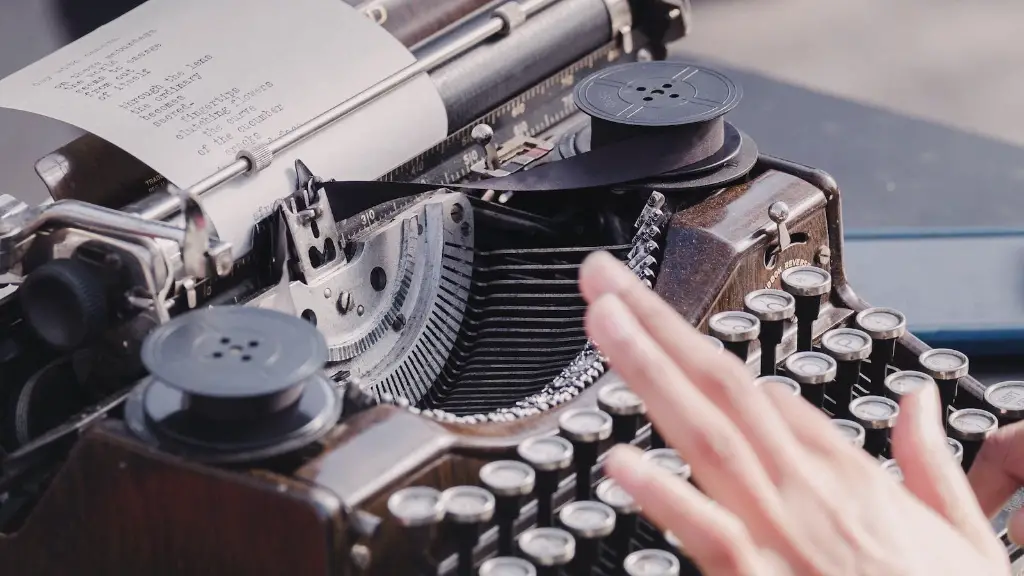Design Planning
Designing a poetry e-book is so much more than just formatting the poem onto a page. It involves careful planning and thought, in order to create an attractive and informative e-book that your readers will want to return to time and time again. Firstly, one needs to decide what type of poems to include. Are they solely the poet’s own work, or will the inclusion of other poems from other authors be included too? Once all the poems have been compiled, the foremost consideration involving the design should be the page layout.
The typeface should be chosen with care and consideration, as the font must allow the reader to easily read and absorb the content which is being presented. The size and colour of the font should be in keeping with the style of the poetry, for example, romantic poetry would suit a cursive typeface, whereas a more poetical, thought-provoking poem may require a bolder typeface. In terms of positioning, a margin of approximately one and a half inches is usually sufficient, however, a centred poem can create a visually aesthetically pleasing and easy to read layout. Furthermore, it is important to ensure headings are clear, concise and informative because of the invaluable information that these offer the reader.
The introduction of an image or photograph can also enhance the layout of the page, as humans generally respond well to visual stimuli. An effective way of adding to the design is to juxtapose a bold, eye-catching image which directly relates to the poem. For example, a sun-drenched beach scene can signify a poem concerned with nostalgia and longing.
Adhering to the most basic of formatting rules, such as capitalisation, indentation and italicisation, is also very important, as this is how the reader will be able to immediately identify the structure of the poem as they read.
Software
Web programming is essential in order to construct and format the e-book. Using a coding language such as HTML (HyperText Markup Language) allows a fluid visual experience for the reader, as the webpage can be quickly scrolled through with the click of a mouse. In order for the e-book to be read by a variety of different computer systems, formatting the code in HTML is an absolute must.
In order to properly format the text, create page layouts and insert images, experienced coding knowledge and basic understanding of web design principles is extremely important. If one does not have the necessary web-knowledge to create the e-book, assistance from a professional web development team (who have experience in designing and programming websites) may be necessary.
Selecting the right software is another important consideration. It must be ensured that the chosen software offers both an aesthetic and user-friendly experience to the reader. When selecting a software, its ability to correctly display images and texts, as well as its formatting options and capabilities, must be considered. Furthermore, its ability to incorporate advanced search options should also be examined. One must take into account the viewing environment and the type of device the readers will be using, as well as ensuring the e-book is optimised for both quick downloads and fast performance.
Marketing Strategies
Creating a compelling e-book is only half the battle, marketing it to the intended audience is just as important. To successfully market the e-book, one needs to have a clear marketing strategy from the outset. Firstly, one should decide which type of customers the e-book is targetting, as this will help with marketing decisions in the future. Secondly, awareness must be created, as no one can buy an e-book if they don’t know about it. Advertising the e-book on various platforms such as social media sites, as well as via various blogs, is a surefire way of generating interest in it.
One should also consider author’s talks and presentations, as they provide a real-life platform to showcase your work and create interest. YouTube and podcast interviews are also great ways to drive traffic back to the e-book. Finally, one could consider offering digital bonuses, such as writing tips and tutorials, that the reader will receive after purchasing the e-book.
Costs
Expounding on the subject of costs, creating a poetry e-book can require more funding than initially anticipated. Hiring a web developer to create the software is one factor that may involve a financial outlay. Moreover, one needs to also consider the financial cost of acquiring images and understanding various copyrights. In addition, strategising and executing marketing tactics, such as setting up website hosting, may require extra expenditure. Therefore, making a budget before the project commences may be an ideal solution for monitoring the costs associated.
Publishing
Publishing an e-book is a straightforward process. Once the design, coding and promotional tactics have been finalised and you are happy with the overall finished product, the content should be aggregated into a PDF file. Amateur writers can personally distribute their PDF files, for instance, sending them to family members, friends and followers via email. If the e-book is intended for physical print and sale, the content must be replicated across the other necessary formats (ie. Kindle, iPad and Nook). Furthermore, printing companies usually accept PDF document formats, however, it is important to check the criteria of each printing firm before submitting a file.
Legal Considerations
Whilst constructing the e-book, it is essential to research and consider any legal implications regarding publication. Firstly, one must look at the existing copyright restrictions in order to establish whether permission must be sought to use other authors’ material. One must also explore issues related to publishing rights, as this impacts upon the author’s ability to reproduce, translate and reprint their e-book in the future. Additionally, if warranties and guarantees are made in relation to the e-book, it is important to investigate any legal implications surrounding these too.
Platforms
Platforms such as the Amazon Kindle now allow the reader to download and read books over the internet. It is important to consider which platform is right for your e-book, as depending on the platform there may be additional associated costs. Amazon offers authors the chance to publish their work as both paperback and eBook editions outside the Kindle Store. For example, authors who wish to self-publish their material must pay for the necessary ISBN or barcode required for paperbacks, and must also settle the applicable charges when registering with Amazon Kindle.
Adapting the Design
Whilst the reader should be presented with a design that enhances the poem, it is important to remember that the e-book must be usable on a variety of electronic devices. Adapting the design to fit on the standard dimensions of mobile devices such as Kindle, iPhones and iPads means that the reader can enjoy a consistent and uninterrupted reading experience, regardless of their choice of device. Furthermore, there may be limitations (such as lack of Javascript, frames and flash) which may ultimately affect and limit the design, so it is important to understand how these translate to the reader’s own device.
Submitting to Publishers
Once the design of the e-book is complete, the author should submit their work to a publisher in order to gain further publicity. When submitting one’s work, it is important to research and find a reputable publisher who specialises in publishing eBooks. Furthermore, one should consider learning about the various fees associated with submitting, as these may be deducted from the author’s royalties after publication. Generally, an author may receive a percentage of the royalties (if any) from each sale of the eBook.
Accountability for Quality Control
The author must be accountable for continuing to check the quality of the e-book throughout the entire publishing process. It is their primary responsibility to ensure that the formatting and visual display of the eBook is consistent with the design specification from when the idea was first conceived. It is recommended that the author should make a practice of regularly visiting the online feedback section to ensure that any errors or design flaws are ironed out in a timely fashion. This can ensure that readers are happy with the end result of the e-book in terms of both aesthetic and content.


